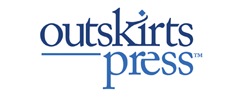|
||
Writing & Publishing Articlesby Brent Sampson |
||
|
||
Retail Margins, Trade Discounts, and What it Means to the Author by Brent Sampson |
||
|
★★★★★
“Simply the Best”
The People in the Sky was my 10th book with Outskirts Press. As expected, everything went smoothly and quickly, resulting in another beautiful book. Outskirts Press is everything you want in a self-publisher and more.
★★★★★
“Outskirts: Honest, Dependable”
Outskirts' people simply do not make promises they don't keep.
★★★★★
“Completely Satisfied.”
Always professional and friendly. Quick response to email and complete explanation of any and all of my questions.
★★★★★
“Outskirts Delivers Excellence!”
I am extremely grateful to everyone at Outskirts Press. My team was great, I could not have asked for anyone more knowledgeable, efficient or patient.
★★★★★
“A Great Publishing Experience”
My contact person kept me well informed during the publication progress. The online platform was easy to use and the finished book was superb! Kudos to Outskirts Press!
★★★★★
“An Honest Publisher in an Industry Filled with Scams”
Outskirts Press creates beautiful physical books and makes them available everywhere. They also offer a variety of other services, including many around book marketing.
★★★★★
“Above and Beyond”
The service exceeded all of my expectations. Everyone was knowledgeable, offered valuable advice and guidance, and was always willing to assist and answer questions. Throughout the process, I felt fully supported and never alone.
★★★★★
“Outskirts is Top of the Line”
The entire staff is friendly, responsive, and provides timely feedback. They make the cost of producing a professionally published book more than reasonable. I will definitely return to Outskirts Press for my next book.
★★★★★
“Outskirts Press Rocks!”
Prompt replies to all my emails was much appreciated. This was my 3rd book with Outskirts and I was very satisfied with the finished product.
★★★★★
“Exemplary Service Provided to 1st Time-Author”
Outskirts Press supported me at every stage of the publishing process, clearly explaining each step along the way. As a first-time author, I now feel fully prepared to market my book.
